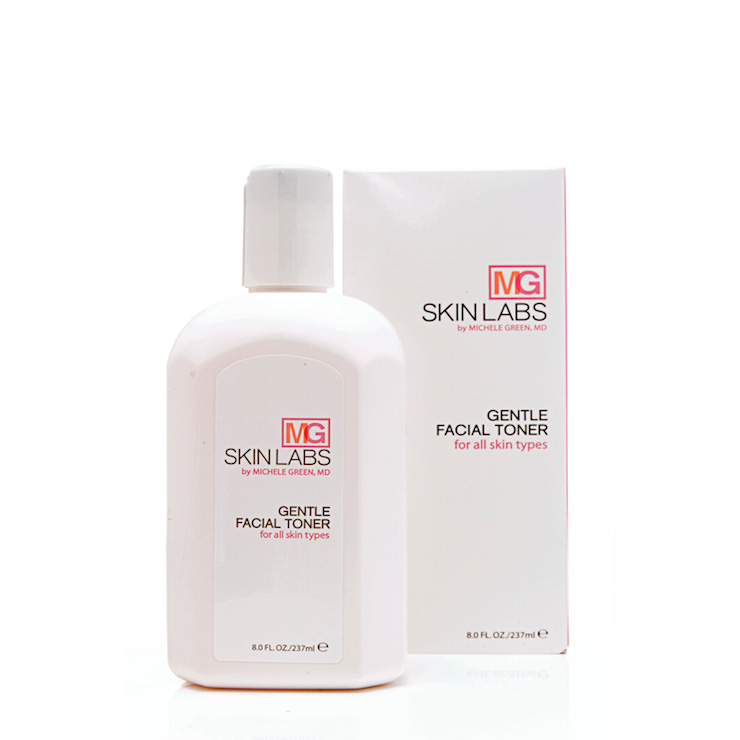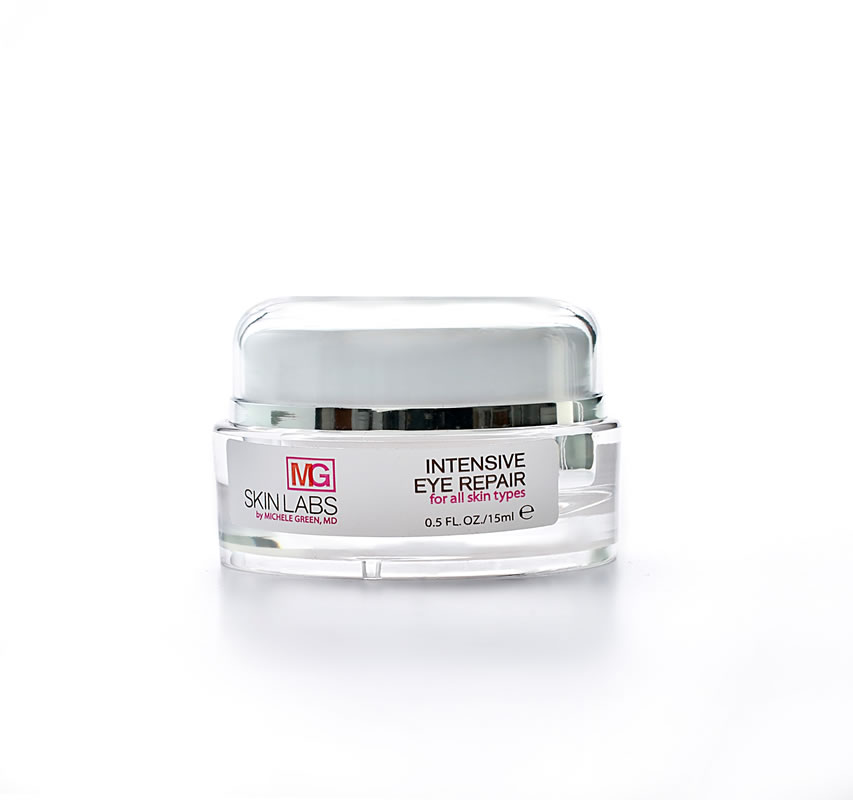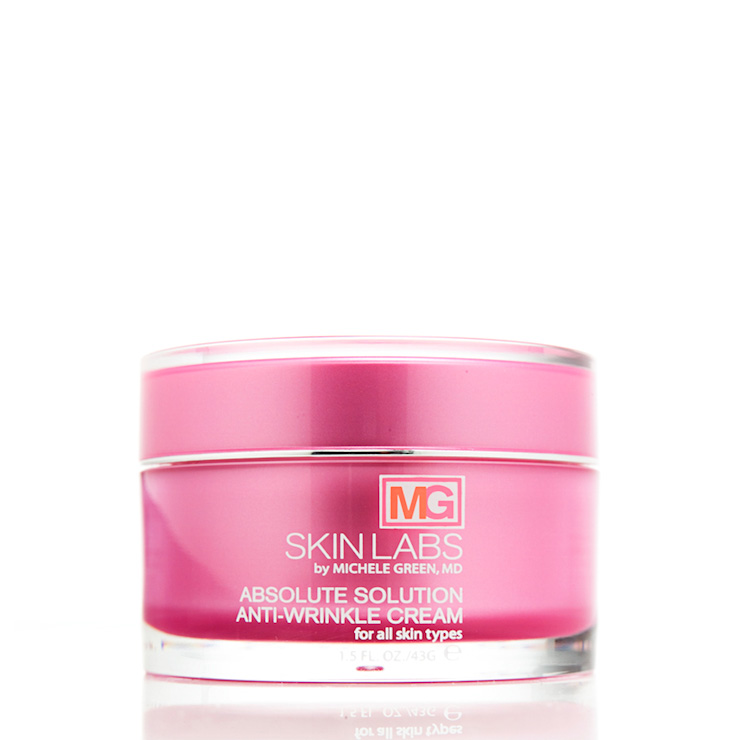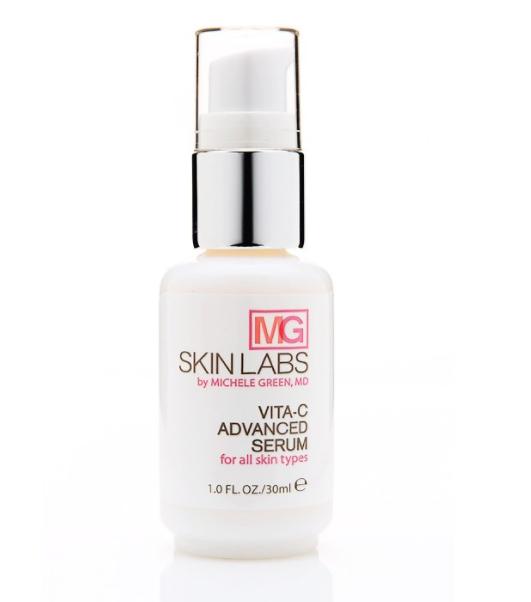Establishing a Nighttime Skincare Routine
Whether you follow a basic three-step routine or incorporate a full range of skincare products, a nighttime routine is essential for keeping your skin clear, bright, hydrated, and healthy. At the most basic level, your nighttime routine should include an oil-based cleanser for makeup removal, a water-based cleanser to remove grime, impurities, oil, and sweat, eye cream to protect the delicate under-eye area, and a moisturizer to hydrate the skin. Your nighttime skincare routine can also be a time to address specific skin concerns, such as breakouts, dry skin, fine lines, uneven skin tone, dark spots, puffiness, dark circles, sun damage, or other signs of aging with acids, serums, essence, and spot treatment. To determine the skincare products that will be best for your skin type and specific skin concerns, schedule a consultation with an expert board-certified dermatologist, such as Dr. Michele Green.
A board-certified dermatologist can help you choose safe and effective nighttime skincare products for your skin type and skin needs. Depending on how sensitive your skin is and the amount of oil (sebum) you naturally produce, certain products may be more or less effective as part of your nightly routine. If you are prone to acne breakouts, Dr. Green can recommend spot treatments and exfoliating products containing ingredients such as vitamin A, salicylic acid, or benzoyl peroxide to keep your skin clear and bright without irritation. With so many skincare products available over the counter, knowing which treatment options will work best can be challenging. Consulting with an expert dermatologist like Dr. Green can provide a good jumping-off point for finding the most effective products for firming, brightening, and nourishing your skin.
Experienced, board-certified dermatologist Dr. Michele Green has been expertly treating patients in her Upper East Side New York City dermatology office for more than 25 years. A master at various cosmetic and medical skincare treatments, Dr. Green is highly adept at creating unique, effective skincare plans for each patient. With her proprietary line of skincare products, MGSKINLABs, Dr. Green can provide patients with recommendations for the highest quality creams, lotions, and serums. Well-known for high patient satisfaction, Dr. Green has been voted one of the best healthcare providers in New York City by such publications as Castle Connolly, Super Doctors, and New York Magazine.

What is the best night skincare routine?
Patients often wonder, “What is the best nighttime routine?” While the best skin care products will depend on your skin type and specific skin concerns, the steps for your nightly skincare routine are generally consistent from person to person. On the most basic level, patients should begin with a gentle face wash, which includes makeup remover to wash off makeup, dirt, grime, and other impurities from the day. After washing the face, patients may choose to exfoliate and apply toner to promote skin cell turnover and prepare the skin for additional products. After toner, patients can apply serums, essences, and treatments designed to target a specific skin concern, such as acne-prone skin, weak skin barrier, or signs of the natural aging process. Following treatments, it is essential to moisturize and hydrate the skin with eye cream, face oil, moisturizer, hydrating face masks, or night cream. For more information about each step, keep reading below.
Oil Cleanser
Oil cleanser is the first step of the nighttime skincare routine and the first part of the double cleanse process for clearing the face of makeup, excess oil, dirt, sunscreen, and other debris that builds up over the day. An oil-based cleanser works specifically to dissolve oils produced by your skin to remove waterproof makeup and unclog the pores. Depending on the type of oil cleanser, you may apply the product to dry or wet skin before gently rinsing and patting the face dry. Patients with combination or oily skin can find that oil cleansers increase sebum production and may want to skip this step.
Water-based Cleanser
Following the oil cleanser, water-based cleansers should be used to clear the skin of additional dirt, sweat, and excess oil. A water-based gentle cleanser, such as micellar water, is essential for removing skin impurities that the oil-based cleanser missed, helping prevent breakouts and clearing the pores. The cleanser should be applied when the face is damp, massaged into the skin, and then rinsed with warm water.
Exfoliating
Exfoliation of the skin should be performed one to two times a week to help remove dead skin cells from the face, promoting skin cell turnover and clearing the pores. Two types of exfoliation can be performed: chemical exfoliation and physical exfoliation. Chemical exfoliation involves the application of a solution containing such ingredients as lactic acid or glycolic acid, which causes a reaction with the dead skin cells and debris, causing them to slough off the skin, leaving the skin bright and clear. Physical exfoliation involves the application of an abrasive ingredient, such as biodegradable beads or sugar. Physical exfoliation is highly effective but is more likely to cause skin irritation, so be sure to consult with your dermatologist on which method would be best for you, especially if you have sensitive skin.
Toner or Hydration Spray
Toner can help hydrate the skin and remove debris left after face washing during your nighttime skincare routine. Dr. Green recommends looking for hydrating toners with active ingredients, such as hyaluronic acid, glycerine, or lactic acid, for application on the face at night. Toner helps balance the skin’s pH levels and allows for better absorption of moisturizing products. It should be applied by gently patting the product onto the skin. For use after cleansing, Dr. Green recommends MGSKINLAB’s Gentle Facial Toner to gently neutralize sebum and unclog pores for clear, bright, healthy-looking skin.

Acid Treatment & Retinol
Acid treatments, including AHAs like glycolic acid and BHAs like salicylic acid, promote skin cell turnover, which helps the skin look brighter and clearer over time. If you are beginning acid treatment, it is best to apply the products only once a week to reduce the potential for skin irritation. Start with a patch test, where you apply only a small amount of product on one area of the skin to see how the skin reacts. If there is no negative reaction, the acid treatment can be applied to a cotton pad and swept onto the face. Consistent use of acid treatment can help decrease signs of the natural aging process, such as fine lines, wrinkles, scarring, and acne.
Retinol and retinoids are derivatives of vitamin A and also help with skin cell turnover. By triggering new collagen production, retinoids provide patients with smooth, evenly textured skin and clear clogged pores. Retinoids can be available in low concentrations over the counter or by prescription in higher concentrations. For the best nighttime retinol product, Dr. Green recommends MGSKINLAB’s Essential Antioxidant Infusion: PM Retinol, which stimulates collagen production while you sleep for healthier, smoother, younger-looking skin.
Serum and Essence
Serums and essences can be applied to address specific skin concerns, depending on your needs. During your nightly and morning skincare routines, antioxidant serums, such as vitamin C and vitamin E serums, can protect the skin against free radicals that can damage the skin barrier. Vitamin C serums, such as MGSKINLAB’s Vita-C-Serum, correct skin discoloration and uneven texture, brightening and firming the skin. Vitamin E serum and niacinamide can both be highly effective in combatting dryness and hydrating the skin for a smoother, clearer skin look.
Spot Treatment
The best first step for treating stubborn active acne breakouts is to consult with an expert dermatologist, such as Dr. Green, who can recommend products that will erase blemishes without causing too much skin irritation. Spot treatments containing active ingredients like benzoyl peroxide and salicylic acid can treat acne breakouts and acne-prone skin. Dr. Green recommends using a damp cotton swap to apply the product to the affected area and then letting it dry. Patients should always avoid popping pimples, as this can lead to skin irritation, scarring, and spreading bacteria across the skin and deeper into the pores.
Moisturizer
Moisturizing and hydrating the skin is essential for maintaining smooth, clear, youthful-looking skin. Applying a thicker moisturizing cream as part of your evening skincare routine helps seal in moisture overnight, repairing the skin barrier and promoting healthy skin. There are many different forms of moisturizers, including creams, gels, and serums, but it is often best to look for products containing ingredients such as glycerine, ceramides, peptides, and antioxidants. The best moisturizer for your skin type and local environment can vary. For advice on what kind to choose, you can make a consultation appointment with Dr. Green.

Eye Cream
The skin under the eyes is often thin and delicate, and it can show early signs of aging with fine lines and dark circles. Applying eye cream under the eyes can help firm the delicate skin and prevent fine lines, such as crow’s feet, and hyperpigmentation. It is best to look for eye creams that contain hydrating ingredients such as ginseng, honey, and ceramides. Eye creams should be gently applied by tapping the treatment area rather than rubbing.
Sleep Mask & Night Cream
Sleep masks and night creams are optional last steps in your nighttime skincare routine. They help seal in moisture so you can get the full benefits of all your evening treatments, protect the skin, and help repair the skin barrier overnight. To apply the sleep mask or night cream, place a small amount on your fingers and spread it evenly on the face. Some masks may need to be washed off, while others can stay on all night.
How to choose the best nighttime routine skincare products for your skin type
While the steps of the standard nighttime skincare routine will stay the same from patient to patient, the individual products used in each step may differ depending on your skin type. Different skin types are as follows:
- Normal Skin: Patients with normal skin have naturally balanced oil production, meaning that skin stays hydrated without excess oil production. Normal skin is not prone to acne breakouts and is not sensitive to skincare products.
- Oily Skin: Patients with oily skin experience excess oil (sebum) production, causing the skin’s surface to become shiny and greasy. Overproduction of sebum on the skin’s surface can also lead to clogged pores, meaning patients with oily skin are more susceptible to acne breakouts.
- Dry Skin: Patients with dry skin experience red, rough, and flaky skin due to a lack of moisture in the skin barrier. Dry skin can cause discomfort and irritation.
- Combination Skin: Patients with combination skin have oily skin in the T-zone (the forehead, nose, and chin) and dry skin on their cheeks. They may need different products for different areas of their face.
- Sensitive Skin: Patients with sensitive skin experience increased rates of skin irritation due to the application of certain skincare products. In particular, scented and exfoliating products can cause redness, stinging, and itching on sensitive skin.
The best way to determine which products are best for your skin type is to schedule a consultation with Dr. Michele Green, an expert board-certified dermatologist.
What should my nighttime skincare routine be?
Patients often wonder, “What should my nightly skin routine be?” Your morning skincare routine and nighttime skincare routine are largely similar, with several key differences. To start, your morning skincare routine should be more focused on protecting the skin from harsh environments. In contrast, the evening skincare routine is more focused on sealing in moisture for overnight skin barrier repair. In the morning, every patient’s skincare routine should end with the application of sunscreen with SPF 30 or higher. Unprotected exposure to the sun’s UV rays can lead to sun damage in the form of discoloration, sun spots, hyperpigmentation, fine lines, and wrinkles. At night, patients should always start by cleansing the face of makeup, debris, and sunscreen and end with a night cream or thicker moisturizer.
What is good to apply on the face at night?
With many available skincare products and many potential steps in your evening routine, it can be challenging to know what to apply to your face at night. The answer depends on each patient’s specific skin concerns, skin type, and aesthetic goals. On the most basic level, every nighttime skincare routine should begin by cleansing the face with a gentle cleanser to remove the makeup, sunscreen, and debris that accumulated on the face during the day. Applying toner after cleansing the face can help to hydrate the skin and remove any excess oil, preparing the skin for any additional treatments, serums, or essences to follow. Treatments and serums, such as retinol, vitamin C serum, and acids, can help to unclog the pores, improve skin texture, reduce hyperpigmentation, and prevent acne breakouts for smoother, brighter skin. After treatments, patients should moisturize, using an eye cream specifically for the under-eye area and a full facial moisturizer, either in the form of a cream, gel, face oil, or hydrating face mask.

What to apply on the face before sleeping?
As the last step of their nighttime skincare routine, patients should apply a facial moisturizer to seal in hydration for brighter, smoother skin. Dr. Green recommends moisturizing the under-eye area with an eye cream before moisturizing the whole face. The under-eye area is delicate and prone to showing signs of the natural aging process, such as fine lines, wrinkles, puffiness, and dark circles. One of the most effective eye creams available is MGSKINLAB’s Retinol Eye Cream, which can be applied both morning and evening for smooth, clear skin. With retinol as an active ingredient, MGSKINLAB’s eye cream works to reduce the appearance of crow’s feet and fine lines while improving skin elasticity and firmness.
When it comes to finding the best moisturizer, consider your skin type. For patients with dry skin, Dr. Green recommends the Intensive Skin Repair Lotion, which can be applied both morning and evening for lightweight skin hydration. Patients with acne-prone skin, on the other hand, can turn to the Ultimately Sheer Hydrating Lotion, which is rich in aloe and rosewater and controls excess oil production for matte, clear skin. The Absolute Recovery Anti-Wrinkle Cream is another fantastic MGSKINLABs product that contains rose extract and shea butter to soften fine lines and wrinkles and strengthen the skin’s moisture barrier.
What are the 7 steps of a skincare routine at night?
The number of steps and products used in an evening skincare routine can vary from patient to patient, depending on their specific skin needs and type. On the most basic level, patients should always clean their faces by removing makeup, sunscreen, and other debris, treating any skin concerns like acne, and moisturizing with an under-eye cream and a full-face moisturizer. From there, the evening skincare routine can be expanded to include additional steps and products like toner and exfoliating. As such, the seven steps of a skincare routine at night can include:
- Double cleansing with an oil cleanser and a water-based cleanser
- Exfoliating (only once or twice a week)
- Toner
- Serums and Essence (addressing specific skin concerns)
- Spot treatment for acne-prone skin
- Eye cream
- Moisturizer, night cream, and face masks
What is a good skin routine order before bed?
When developing a skincare routine before bed, patients can follow the rule of applying the thinnest products first and ending with the thickest. The first step should always be washing the face with a gentle cleanser. Some patients use both oil-based cleansers and water-based cleansers to thoroughly remove makeup, sunscreen, sweat, dirt, and other debris. Once a week, patients may also choose to exfoliate using a chemical or physical exfoliant to remove dead skin cells and promote skin cell turnover. After exfoliating, patients can apply a hydrating toner to prepare the skin for absorbing treatments, serums, and hydrating products to come. Treatments and serums can be applied next to address specific skin concerns, such as acne breakouts, fine lines, discoloration, dark circles, or uneven skin texture. Following the treatments, the patient should hydrate the delicate under-eye area with an eye cream before moisturizing the rest of the face with a hydrating moisturizer, face oil, or face mask.
How to double cleanse at night
There are two main types of cleansers available for use at night: oil-based cleansers and water-based cleansers. Oil cleansers remove makeup, sunscreen, and a buildup of sebum on the skin. The oil-based cleanser, which contains ingredients such as macadamia oil, jojoba oil, and grape seed oil, is the first step in the double cleanse. Depending on the type of oil cleanser, the product may be applied to dry skin or damp skin before being gently washed off with lukewarm water. Next, patients can apply the water-based cleanser to damp skin, which is essential for removing the skin impurities that were missed by the oil-based cleanser to help prevent breakouts and clear the pores. Patients with dry skin can look for cleansers with ceramides, glycerin, or hyaluronic acid to help with hydrating the skin. Patients with acne-prone skin can look for cleansers that contain glycolic acid, salicylic acid, or tea tree oil to control excess sebum production.

Can I use vitamin C serum at night?
Vitamin C serum is a highly effective product for your nightly routine. Dr. Green highly recommends MGSKINLAB’s Vita-C Serum, which helps trigger skin cell turnover and collagen production. Rich in vitamin C, the Serum moisturizes skin while improving texture and radiance. A potent antioxidant, vitamin C also helps neutralize the harmful effects of free radicals.
What are the 4 basic skincare routines?
In reference to the most basic nighttime skincare routine, patients often ask, “What is the 4 night skincare routine?” The best evening skincare routine is the one that works for you and allows you to be consistent. For some patients, many steps in the evening can seem daunting, leading them to wonder what the simplest way to keep the skin healthy is. The four most basic steps to follow for clean, clear, balanced skin are:
- Wash the face with a gentle cleanser to remove makeup, sunscreen, and other debris.
- Apply any treatments necessary to address specific skin concerns, such as spot treatment for acne or vitamin C serum for pigmentation and uneven skin texture.
- Apply an under-eye cream.
- Moisturize with a night cream, lotion, or face mask.
The exact products you use for these four basic steps will vary depending on your skin type, concerns, and external environment. Schedule your initial consultation with Dr. Green for more information on which products will be best for your skin needs.
Can you layer too much skincare at night?
The amount of product or number of steps in your evening skincare routine depends on your skin type and specific skin needs. If you are adding new products to your routine, it is best to do so gradually and to skin-test them by applying a small amount to one area of the face and seeing how the skin reacts. Some products should not be used together to avoid skin irritation. For example, patients should not use AHAs or BHAs with retinol, as these products, in combination, can lead to redness, itchiness, and irritation. Instead, patients can alternate these products every couple of days to achieve the benefits of both without the potential skin irritation.
How to get started with the best nighttime skincare routine today
When it comes to skincare, it can feel difficult to know what products to use and what regimen to follow to get glowing, clear, bright skin. As we age, the production of the structural protein collagen decreases, which can lead to the development of fine lines and wrinkles on the face. Dry skin can prevail, dark spots can form blemishes on the surface of the skin, and even in adulthood, acne breakouts can occur. Finding a morning and nighttime skincare routine that keeps the skin balanced, hydrated, and clear is essential for maintaining healthy skin and a naturally youthful appearance. Finding the right products for your skin type and skin needs can be challenging on your own. For advice on determining the best skincare products for your nighttime skincare routine, schedule a consultation with New York City-based dermatologist Dr. Michele Green.
Dr. Michele Green is an internationally renowned board-certified dermatologist with over two and a half decades of experience providing her patients with the best non-invasive treatment options. Dr. Green takes a holistic approach and embraces a less-is-more philosophy, creating customized skincare routines and treatment plans that cater to the unique concerns and aesthetic goals of her patients. She is consistently identified as one of New York’s best dermatologists by Castle Connolly, New York Magazine, and Super Doctors for her dedication to her patients and expertise. Please call us at 212-535-3088 or email our New York City-based office today to schedule a consultation with Dr. Michele Green and find the skincare plan that is right for you.
 212-535-3088
212-535-3088